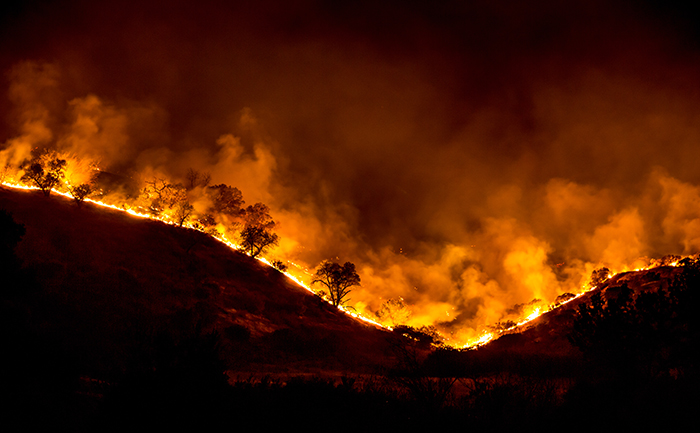KU researchers to analyze how climate change intersects with race, inequality, health outcomes

LAWRENCE — As climate change causes extreme temperatures, droughts, poor air quality, flooding and sea level rise, health outcomes for people living in affected areas suffer. Researchers at the University of Kansas are launching a new effort to determine how climate change interacts with health inequity in communities with high levels of segregation, economic and social disadvantages.
 The County Health Ranking and Road Map Project of the Robert Wood Johnson Foundation has awarded KU a one-year, $100,000 grant to analyze and compare publicly available data on climate disasters with county health outcome data in the United States. In a country as large as the U.S., climate change affects varying regions differently.
The County Health Ranking and Road Map Project of the Robert Wood Johnson Foundation has awarded KU a one-year, $100,000 grant to analyze and compare publicly available data on climate disasters with county health outcome data in the United States. In a country as large as the U.S., climate change affects varying regions differently.
“We’re going to link the available data on climate change outcomes with indicators of structural racism and see what the patterns are,” said Dorothy Daley, professor of public affairs & administration and principal investigator of the grant.
 Daley and Jarron Saint Onge, associate professor of sociology and population health at KU and co-principal investigator, theorize that climate-related health outcomes will vary by county-level race/ethnicity and that communities with inequalities are more likely to experience worse exposures and outcomes from climate-related events. Research has long established links between individual behaviors and social determinants of health such as residential community, income, education and other factors. The project will further examine the influence of community disadvantages and climate on public health outcomes.
Daley and Jarron Saint Onge, associate professor of sociology and population health at KU and co-principal investigator, theorize that climate-related health outcomes will vary by county-level race/ethnicity and that communities with inequalities are more likely to experience worse exposures and outcomes from climate-related events. Research has long established links between individual behaviors and social determinants of health such as residential community, income, education and other factors. The project will further examine the influence of community disadvantages and climate on public health outcomes.
The researchers will analyze data from several sources, including the National Oceanic and Atmospheric Administration’s Billion Dollar Weather and Climate Disaster dataset on flooding, freeze events, severe storms, tropical cyclones, wildfires and winter storms from 1980 to 2020. They will also examine NOAA’s Climate Extreme Index for national-level data, as well as county-level data from the Center for Disease Control’s National Environmental Public Health Tracking Network, the NOAA’s Storm Events Database and Federal Emergency Management Agency information on the number of federal disaster declarations a county has experienced in recent years and FEMA’s National Risk Index.
The analysis will look specifically at indicators of climate change such as drought, extreme heat, extreme cold and natural disasters and how they interact with racial inequity evidenced by various levels of community segregation, economic disadvantage, levels of educational attainment, community wealth, political engagement and community resilience to predict patterns of health outcomes across the United States.
Daley, whose research has long focused on climate change policy, said the project’s results can not only further establish links between climate change and public health outcomes, but they have the potential to identify communities that most need investment and the policies to help improve public health outcomes and resilience to the threats of climate-related events.
“We’ve looked at things like when state and local governments work on climate change, does it make a difference, or do we see things like reductions in emissions? For this project, we’re looking at a community-level basis and through a health equity-focused lens,” Daley said. “It remains important to develop a better understanding of the association between climate change events, racial inequity and patterns in community health outcomes. Our modeling will control for established determinants of health that are available at the county level and will recognize the multiple meanings of various measures. More local level research is needed to better understand how different types of climate risks interact with other chronic stressors, like residential segregation, to magnify health outcomes.”
Image: Trees burn in the Woolsey Fire in California in 2018. Credit: Wikimedia Commons